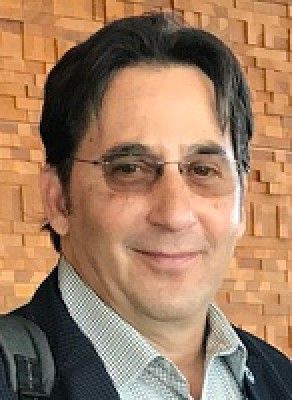
Follow Up Interview with The American Macular Degeneration Foundation (AMDF)
Questions and answers with AMDF.

1. Since our last interview are there any new developments with the American Macular Degeneration Foundation (AMDF) that you would like to share?
At AMDF, we have been pushing expansion of content into new formats and channels. Most recently, this initiative has been focused on video content. Video allows us to reach more people, different demographics, and to present information in a format that may be more useful to people with low vision, or who prefer video and audio learning over reading.
On our YouTube channel and on our website, macular.org, under Resources, you will find our growing "Living With Macular Degeneration" series of short and long-form profiles that focus on issues of concern to the AMD community: getting support from family and friends, getting eye injections, living alone and finding hope.
We have also just launched the first in a planned library of How-To videos that will provide solutions for tasks that become difficult with vision loss. These videos follow the release of our four-part cooking show that focuses on foods that are beneficial to those with AMD.
2. How has the AMDF evolved since its inception, and what are the key milestones or achievements that reflect its growth in achieving its mission?
AMDF's evolution has been in its growth and capacity to respond to the AMD community's needs. We not only listen to the concerns of the AMD community, we now actively bring those voices to decision-makers in Washington, DC, where we press for increased research funding and expanded healthcare coverage.
We fund many more research projects, some of which are in partnership with others, like-missioned organizations. That research is directed at new treatments, and also at projects that seek to improve quality of life for those who are living with vision loss.
As mentioned earlier, we are growing our resources online as our constituents or their supporters become more adept at using technology and we are increasing our ability to generate educational programs. We are especially focused on providing useful tools for daily living, as represented by our AMD cookbook, for which a second edition is in development.
3. In addressing the unique obstacles faced by AMD patients, how does AMDF prioritize a patient-centric approach in its programs and initiatives, ensuring that the individual needs of those affected are considered?
Communication. We directly communicate with the patient population as much as we can and take what we learn from them to inform programs and initiatives. From one-on-one conversations to surveys designed to help us better understand the daily challenges confronting AMD patients.
4. How does AMDF collaborate with healthcare providers and institutions to bridge the gaps in care coordination for individuals with macular degeneration? Are there specific partnerships or collaborative efforts that have been particularly successful?
AMDF does not work directly with healthcare providers, in this regard. Rather, we create programs that empower individuals to become more actively engaged in their care. One of our areas of focus is on patient - provider communications, where we are developing programs to overcome the obstacles that can exist within those relationships. We are also concerned about access to care, and we are developing a program to address that need.
5. Regarding emerging gene therapies, how does AMDF work to raise public awareness about these potential treatments? Are there educational campaigns or resources in place to inform both patients and the broader community about the latest developments in this field?
Gene therapies, while exciting in the potential they hold to halt disease progress and possibly restore sight, are still emerging. While we routinely review the various forms of gene therapy that are in development both in our online blog and in print in our newsletter — we also generate webinars, which can be found on our website, under Resources. We will have a lot more content available in 2024, as one of our supported researchers has developed a game-changing approach to gene therapy that is showing strong promise in clinical trials!
6. In relation to the educational programming on healthy eating and kitchen accessibility, could you share how they are designed to work?
These are on-demand YouTube videos that provide educational content about AMD nutrition and recipes, based on the most current AMD nutrition science. Our goal with the videos was to create a fun and entertaining educational program to educate and inspire AMD patients to eat better for eye health, and to make it feasible for them to prepare these meals.
7. Can you provide insights into any innovative approaches or technologies that AMDF incorporates into its planned activities and initiatives? How does the organization stay at the forefront of advancements to better serve its community?
AMDF has a long history of innovation in how we reach our community and create impact. The very origin of the organization was based on filling a gap. When our founder, Chip Goehring, was diagnosed with AMD in his 40's, there wasn't any information available for AMD patients, so he founded AMDF to create that information outlet. Shortly after, he heard about the World Wide Web, which was in its infancy, and initiated building a website to house educational information about AMD, well ahead of similar organizations. Technology is now part of the DNA of AMDF, and we are already exploring how AI can assist us in useful data analysis and tool creation.
We are also building a partnership with a tech company through which we are hoping to bring the actual experience of progressive AMD vision loss to patients to increase their adherence to treatment, to doctors and researchers to generate empathy and motivation, and to legislators and funders to grow financial resources for more research.
But at the heart of AMDF's innovation is our patient-first approach. Beyond educating AMD patients, AMDF works diligently to create resources that cover all aspects of living with AMD.
8. How can the general public, including those who may not be directly impacted by macular degeneration, actively engage with and support AMDF's initiatives? Are there specific ways individuals can contribute to the organization's broader goals and impact?
Interesting that you should ask. We just put out a call, in a recent newsletter, for people to share their experiences with AMD through writing and art. We are also going to be posting opportunities to get involved — through surveys, as subjects of videos and as patient advocate speakers.
Get Involved
The simplest but perhaps most effective way to get involved is by requesting our AMD Awareness pin that is designed for anyone to wear. The idea is to create a moment where AMD can be discussed. It's such an interesting looking pin that it invariably sparks the question: "What's that pin you are wearing?" It's most effective if the person wearing the pin knows about AMD: the factors that increase risk; the lifestyle choices that can reduce risk and disease progression; and the profound impact that vision loss can have on individuals and those who love them. Top of Form
To connect further with the AMDF, contact amdf@macular.org_
About Matthew Levine

Matthew Levine has been a communications professional for 30 years, with a vision research focus since 2003. At the American Macular Degeneration Foundation (AMDF), his portfolio includes the expansion of the AMDF grant program, the development of strategic partnerships, advocacy engagement and the creation of educational content. He also is an artist, concentrating in watercolor.